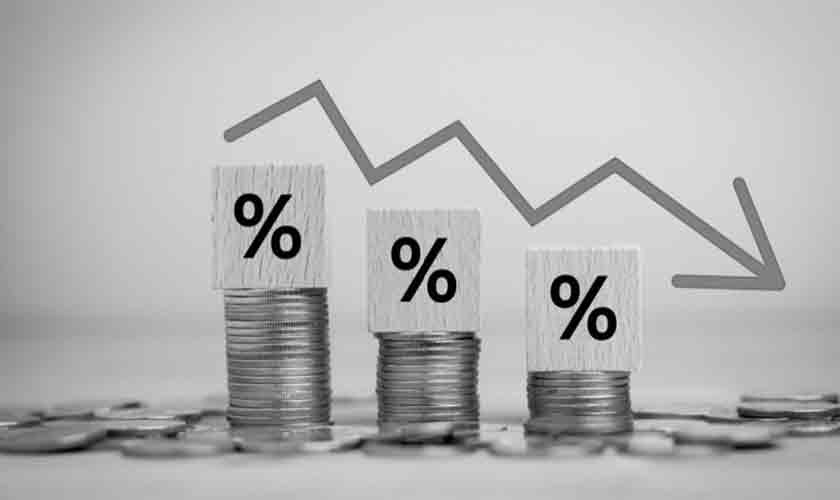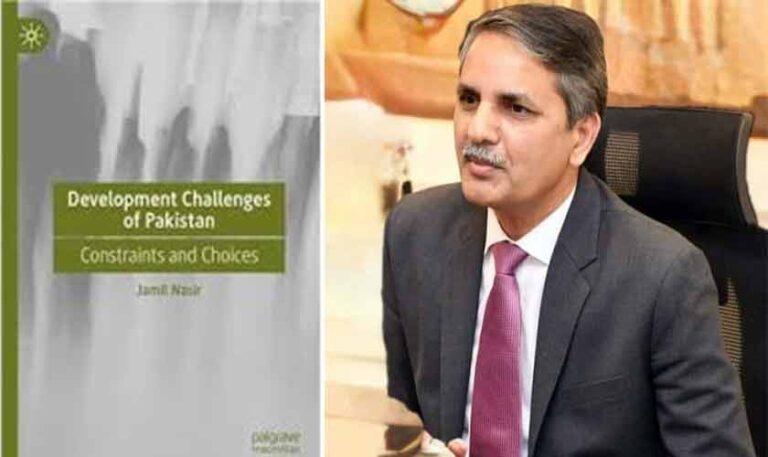
#Arresting #inflationary #spikes #Political #Economy
Inflation is a persistent economic phenomenon where the general price level of goods and services increases over time, reducing the purchasing power of money. This arises from various drivers such as rising demand, rising production costs and expansive fiscal policies. While moderate inflation may indicate economic strength, unchecked inflation often results in severe socioeconomic impacts, disproportionately affecting low-income groups.
Historical examples like Zimbabwe and Venezuela illustrate the disastrous consequences of hyperinflation. In Zimbabwe in the late 2000s, high prices made the national currency virtually worthless, leading to widespread poverty and unemployment. Similarly, Venezuela’s hyperinflation, political instability and ineffective policies, led to severe food shortages, forcing millions to migrate in search of better living conditions.
Recent global trends provide insight into the evolving dynamics of inflation. According to the OECD statistical release on November 6, 2024, inflation in member countries averaged 4.4 percent in September 2024, down from 4.7 percent in August. The decline was mainly driven by a 2.2 percent year-on-year drop in energy prices, with 34 of the 38 OECD countries reporting a decline in energy prices. Seventeen countries experienced negative energy inflation, a trend that has continued over the past months. Despite this decline, average price levels in OECD countries are 30 percent higher than pre-pandemic levels (recorded in December 2019).
While falling energy prices provided some relief, food and core inflation (excluding non-volatile items such as food and energy) showed resilience. Among the G7 countries, headline inflation eased to 2.2 percent in September from 2.4 percent in August, with France seeing a significant improvement due to falling energy prices and slower service inflation.
In contrast, food inflation rose modestly, led by increases in Italy, the United Kingdom, and the United States. In the euro zone, inflation fell to 1.7 percent in September, the lowest since June 2021, mainly due to a 6.1 percent drop in energy prices. However, Eurostat’s preliminary estimates for October indicated that inflation rose to 2.0 percent, reflecting a moderation in the decline in energy prices.
The G20 presented a more diverse picture. Inflation in these countries decreased from 6.2 percent in August to 6.0 percent in September. However, Argentina’s inflation remained above 200 percent despite its fifth straight month of decline, underscoring the serious challenges facing its citizens. Meanwhile, India and Brazil recorded rising inflation, indicating regional disparities in economic stability.
OECD data highlight the complex nature of managing inflation in today’s interconnected global economy. A temporary recovery from falling energy prices is insufficient to address enduring challenges such as food inflation and core inflation. Effective monetary and fiscal policies must strike a delicate balance between curbing inflation and promoting growth. Structural reforms addressing supply-side constraints with targeted subsidies and social safety nets can reduce the negative impact on vulnerable populations.
Inflation remains a major challenge in Pakistan that has a profound impact on socio-economic conditions. November 2024 saw a significant decline in the Consumer Price Index, with the year-on-year rate falling to 4.9 percent from 7.2 percent in October and a surprising 29.2 percent in November 2023. The percentage seen in 2023. However, the return to the price level is a stronger task than in 2017, requiring sustained economic interventions and long-term structural reforms.
Rising inflation in recent years has eroded consumer purchasing power, disproportionately affecting low- and middle-income households. Rising prices for essential goods, including food and utilities, increased financial pressure on families, while businesses faced high production costs that hindered growth and competitiveness. Although inflationary pressures have eased, its effects remain. Real incomes have stagnated, failing to recover commensurate with price stability. Many households continue to struggle financially, underscoring the urgent need for policy measures that increase purchasing power and reduce inequality.
Recent CPI data offer valuable insight into inflation dynamics. Urban CPI rose by 0.49 percent and rural CPI by 0.48 percent month-on-month in November 2024. On an annualized basis, urban inflation rose by 5.24 percent, outpacing rural inflation at 4.31 percent. Food prices showed mixed trends, with urban areas seeing significant increases in items such as tomatoes, eggs and potatoes. Prices of staples like chicken and fresh vegetables saw a decline.
Prices of non-food categories including woolen garments and home textiles recorded an increase, while electricity charges and some construction inputs I decreased. This moderate inflation is higher than the inflation of previous years and better macroeconomic stabilization driven by tight monetary and fiscal policies. Reflects the primary effect.
Achieving price levels similar to 2017 requires a comprehensive and multi-pronged strategy. Monetary policy adjustments are important, as the central bank’s current policy rate of 15 percent could be gradually reduced to stimulate economic activity without reviving inflation. Addressing supply-side inefficiencies in the agriculture and energy sectors is equally important.
Investments in storage infrastructure, transportation networks and post-harvest technologies can significantly reduce production costs and curb price volatility. Addressing the cyclical debt in the energy sector and transitioning to renewable energy sources can further reduce costs and enhance energy security.
Income disparity must also be addressed to restore consumer purchasing power. Rising real wages with falling inflation are essential to raising living standards. Expanding targeted social safety programs, such as the BISP initiative, can provide critical financial support to vulnerable populations.
Fiscal discipline, including expansion of the tax base and effective revenue collection, is essential to reduce dependence on inflationary deficit financing. Encouraging foreign direct investment and promoting industrialization can increase supply capacities and reduce dependence on imports, thereby reducing exchange rate risks.
Global economic conditions continue to influence inflation trends, posing potential risks to sustainable stability. Fluctuations in international oil prices, geopolitical uncertainty, and changing global market dynamics require vigilant monitoring and adaptive policy responses. Increased agricultural productivity through modern farming practices, access to quality inputs and stronger research and development can stabilize food prices while reducing import dependency.
To ensure that the benefits of low inflation reach the common people, the government should focus on effective mechanisms for price monitoring and regulation. Strengthening consumer protection laws and increasing market transparency can prevent unnecessary price manipulation by intermediaries.
Priority should be given to subsidies for essential goods and targeted assistance programs to reduce the financial burden on low-income households. Public awareness campaigns can inform citizens about government initiatives and encourage responsible consumption practices.
A strategic approach to strengthening the national economy involves promoting sustainable economic growth, which naturally helps maintain low inflation levels. Economic growth increases productivity and output, reducing supply-side pressures that contribute to inflation.
Policymakers should emphasize investment in key sectors such as manufacturing, agriculture and technology to drive innovation and efficiency. Diversifying the energy import portfolio and exploring regional partnerships for energy trade can provide stability against fluctuations in global oil prices. Renewable energy projects can reduce long-term dependence on expensive imports.
Strengthening the labor market is another important step. Policies that encourage skill development, education and entrepreneurship can increase employment and income levels. Higher incomes not only improve purchasing power but also stimulate consumer demand, promoting a good period of economic growth and stability. Streamlining bureaucratic processes and improving governance can create an enabling environment for investment and industrial expansion.
In order to guard against further inflationary increases in the future, Pakistan’s monetary and fiscal policies must remain adaptive and responsive to changing global and domestic conditions. Investing in research and data analytics to forecast economic trends can enable proactive measures. Cooperation with international organizations and adherence to best practices in economic management can further enhance resilience and sustainability.
While the reduction in inflation to 4.9 percent is a laudable milestone, the journey towards long-term economic stability and equitable growth requires sustained efforts. A combination of targeted social interventions, structural reforms and strategic investment is necessary to translate the benefits of low inflation into tangible improvements in living standards. By prioritizing inclusive growth and adopting a forward-looking approach, Pakistan can lay the foundation for a resilient economy that protects the well-being of its citizens and ensures sustainable prosperity.
Supreme Court lawyer and author Dr. Ikramul Haque is an Associate Professor at Lahore University of Management Sciences.
Abdul Rauf Shakuri is a US-based corporate lawyer.






